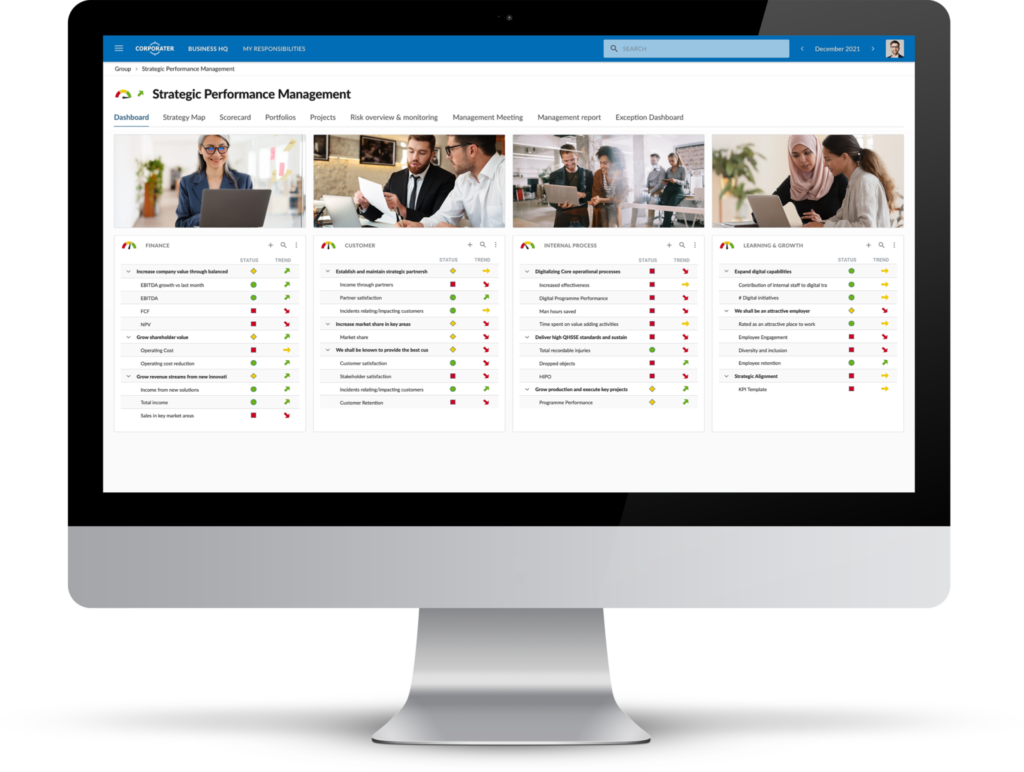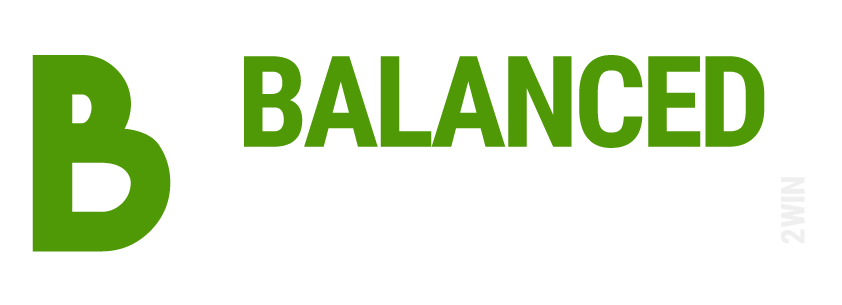A Guide to Balanced Scorecard
The Balanced Scorecard methodology is one of the simplest yet powerful ways to achieve to make the vision and mission of an organization actionable. The Balanced Scorecard provides the framework for an organization to move from deciding to live their strategy, to doing it. The scorecard describes the strategy, breaking it down into its component parts through the objectives and measures chosen in each of the four perspectives.
Unlike traditional performance measurement systems which have financial controls at their core, the Balanced Scorecard begins with an organization’s strategy. The Balanced Scorecard is ideally created through a shared understanding and translation of the organization’s strategy into objectives, measures, targets, and initiatives in each of the four scorecard perspectives.
The four perspectives of a Balanced Scorecard
A balanced scorecard measures your organization’s health from four different perspectives
Learning & Growth Perspective
Focuses on monitoring the three areas of ‘capital’ (Human, Informational and organizational) to ensure success. This perspective looks at your overall corporate culture.
Internal Business Process Perspective
Focuses on identifying and monitoring measures in operations management, customer management, innovation, regulatory and social clusters to ensure value for your customers and shareholders.
Customer
Perspective
Focuses on the people who actually buy your products and services. Who are our customers? What do those customers expect or demand from us? What is our value proposition in serving our customers?
Financial
Perspective
Focuses on objectives and measures relating to a company’s effectiveness in delivering shareholder value, growing revenue, and enhancing productivity.
Balanced Scorecard as a framework
The translation of vision and strategy forces the executive team to specifically determine what is meant by sometimes imprecise terms contained in the strategy, For example: “world class”, “top-tier service” and “targeted customers”. Through the process of developing the scorecard an executive group may determine “world class” translates to may be zero manufacturing defects.
All employees can now focus their energies and day-today activities toward the crystal-clear goal of zero defects rather than wondering about and debating the definition of “world class”. Using the Balanced Scorecard as a framework for translating the strategy organizations can create a new language of measurement that serves to guide all employees’ actions toward the achievement of the stated direction.
Organizational benefits in using a Balanced Scorecard
- It clarifies and helps define the business strategy
- It integrates strategy with performance measurement
- It can provide a comprehensive set of achievable measures, which are clear and understandable to employees
- It enables individuals to make a more effective contribution to organizational performance

Essential Balanced Scorecard
Terminology
Balanced Scorecard Implementation
Cascading a balanced scorecard means to translate the business area scorecard down to first business units, support units or departments and then teams or individuals. The organization alignment should give holistic view, using the strategy map, perspectives, objectives, KPIs, and initiatives. Scorecards should improve accountability and transparency.
An effective BSC requires the development of complex linkages, which can be difficult to establish. Organizations may also find difficulty in translating the identified linkages into effective operational systems which employees can manage the business with.
Development and implementation of a BSC therefore may need to be viewed as a change initiative requiring effective management including:
- Establishing top level commitment
- Developing a robust design process
- Creating ownership amongst employees and managing resistance to change
- Developing understanding through education and training
- Agreeing and communicating the measures to be used
After the development and successful implementation of the scorecards, a strategic performance management software can be used to get the correct information to the correct people at the correct time. Automating the Balanced Scorecard system helps to increase the productivity, quality and performance.

